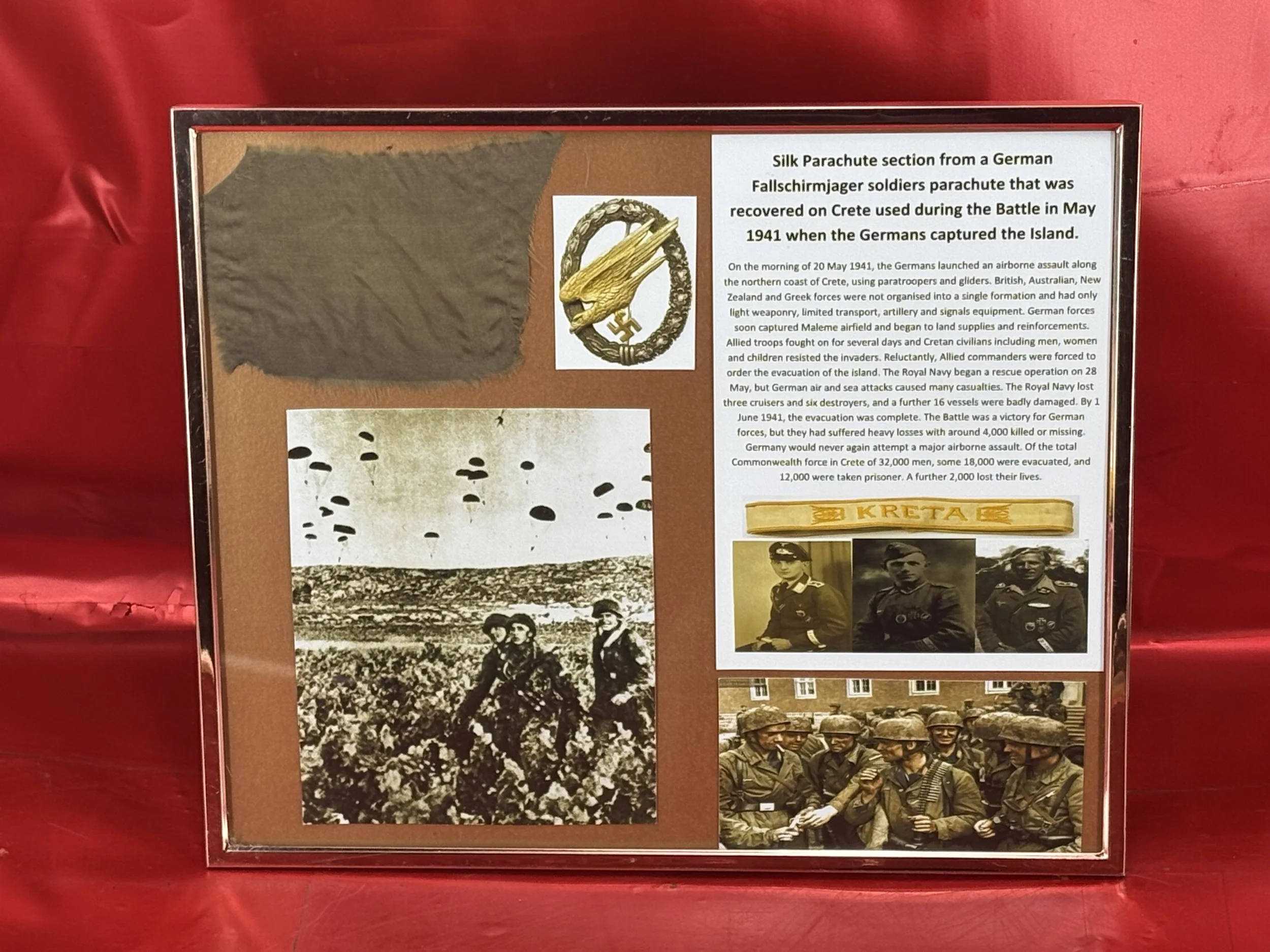 Image 1 of 6
Image 1 of 6

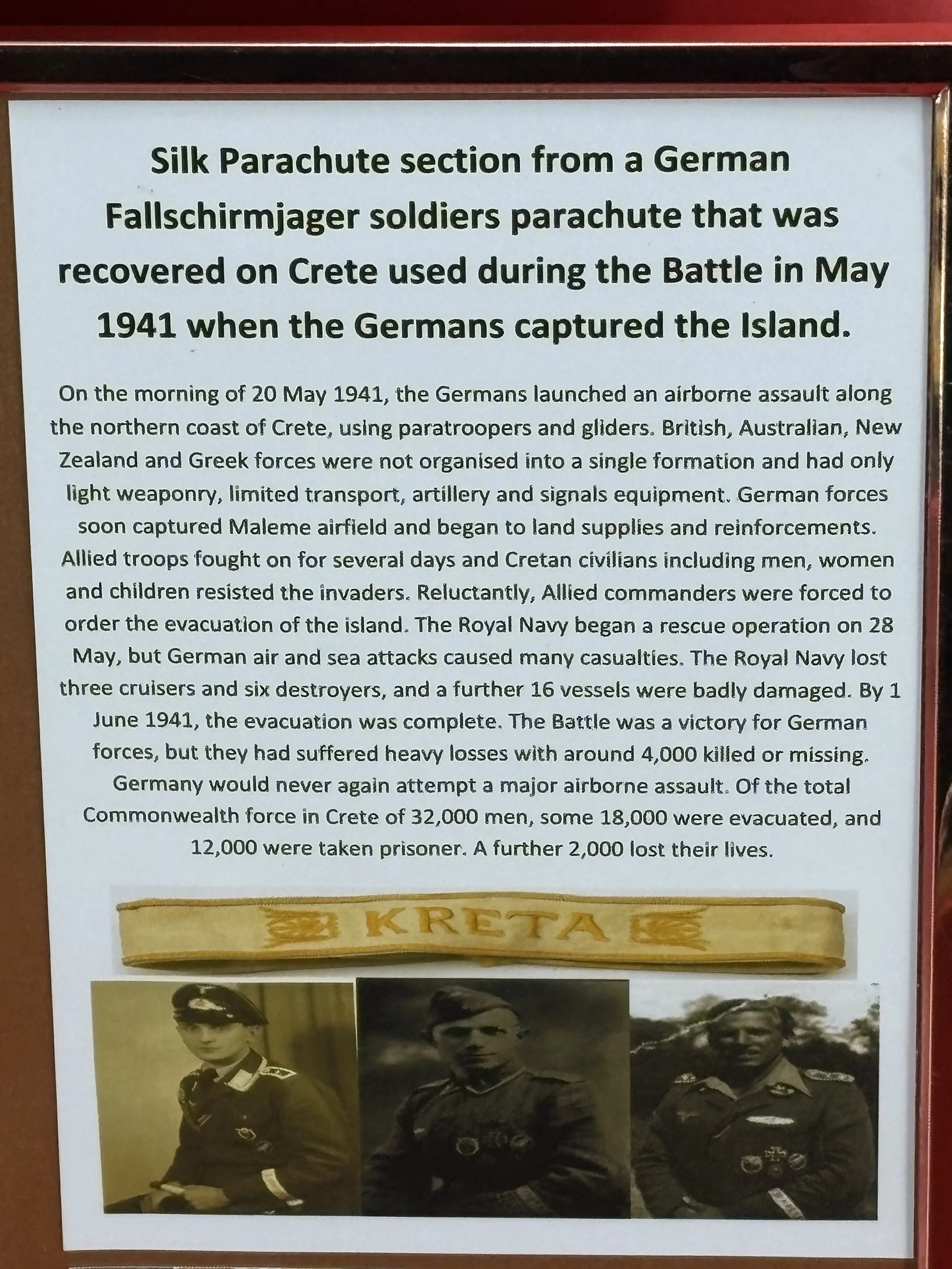 Image 2 of 6
Image 2 of 6

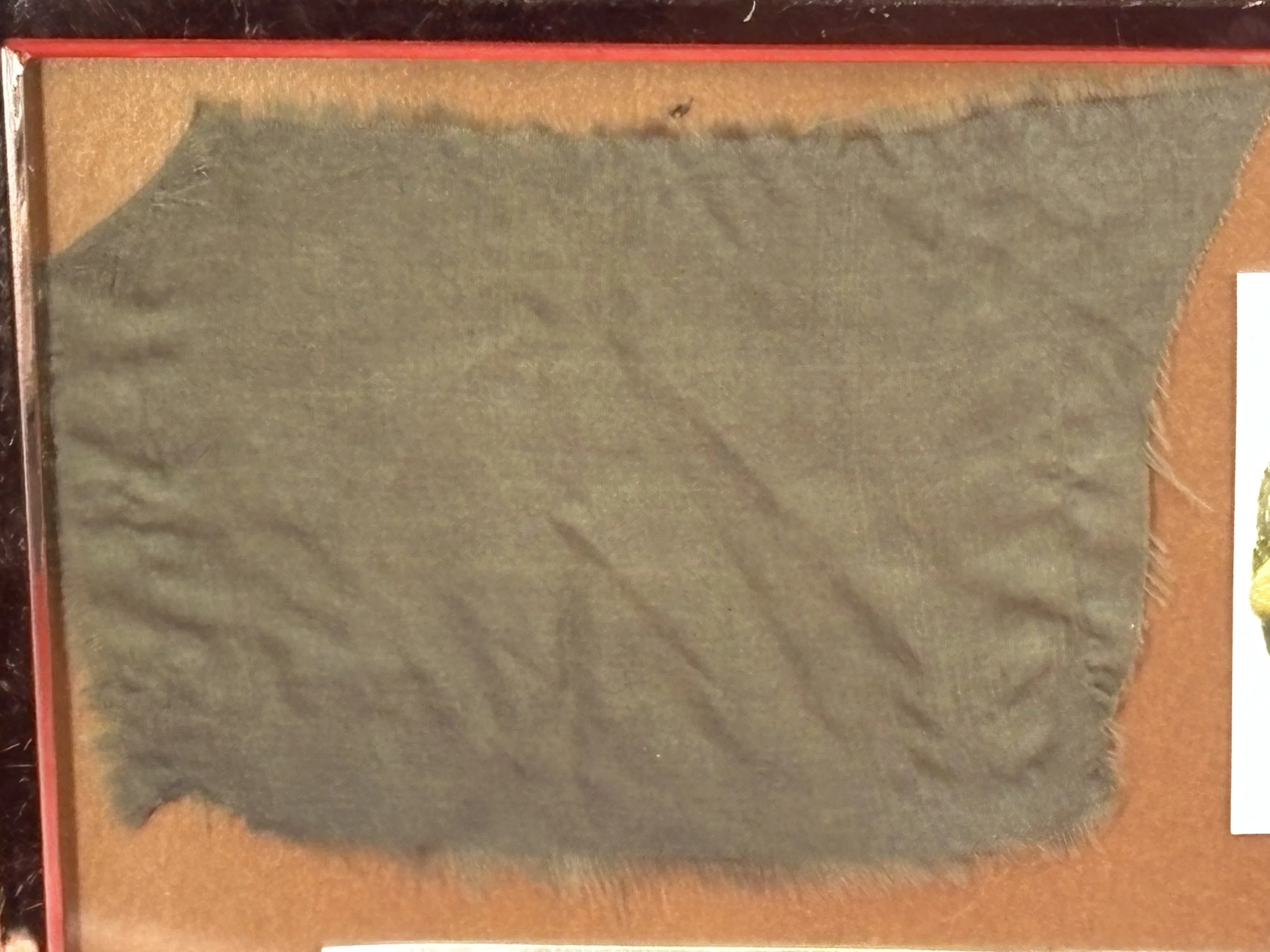 Image 3 of 6
Image 3 of 6

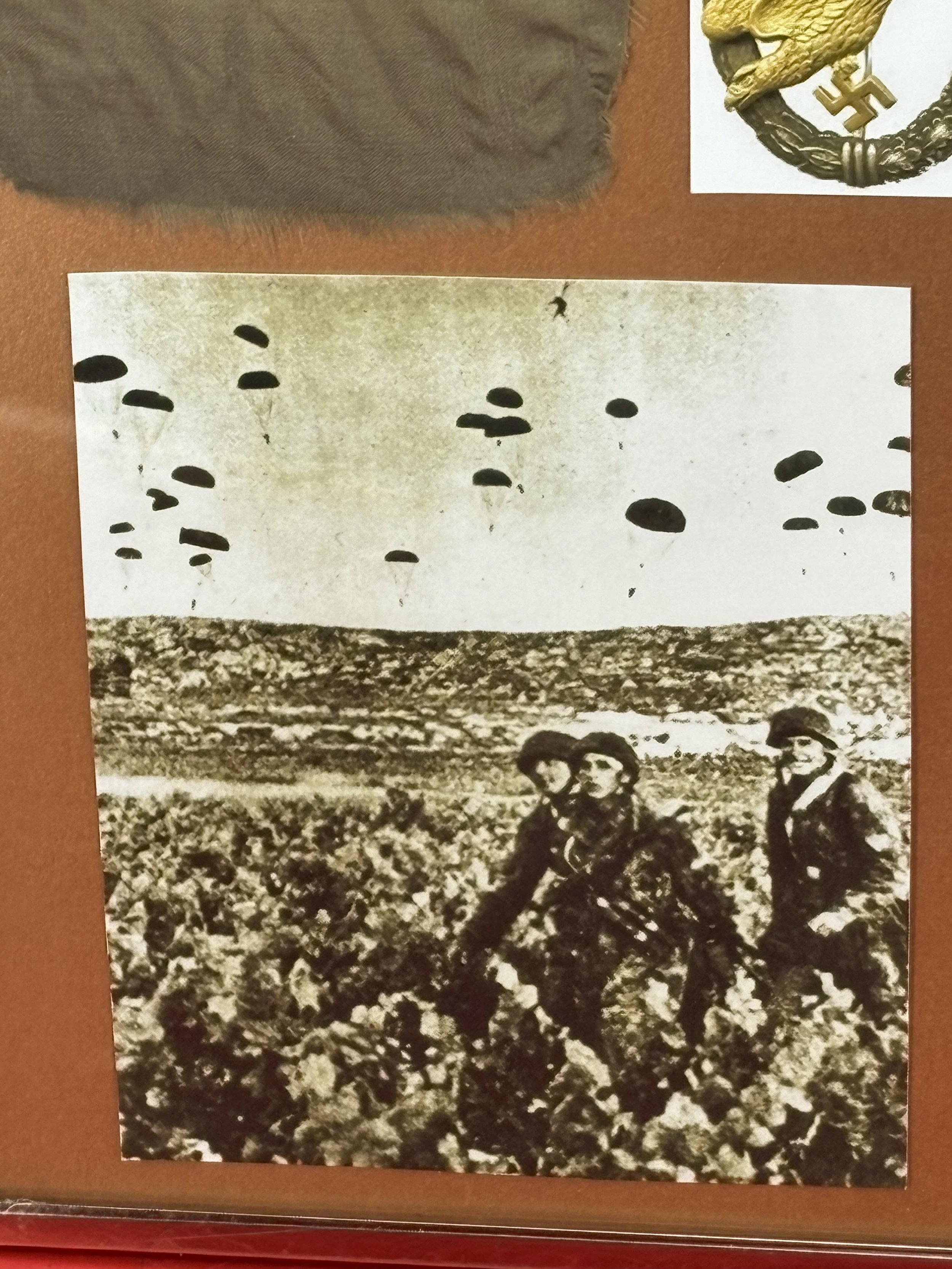 Image 4 of 6
Image 4 of 6

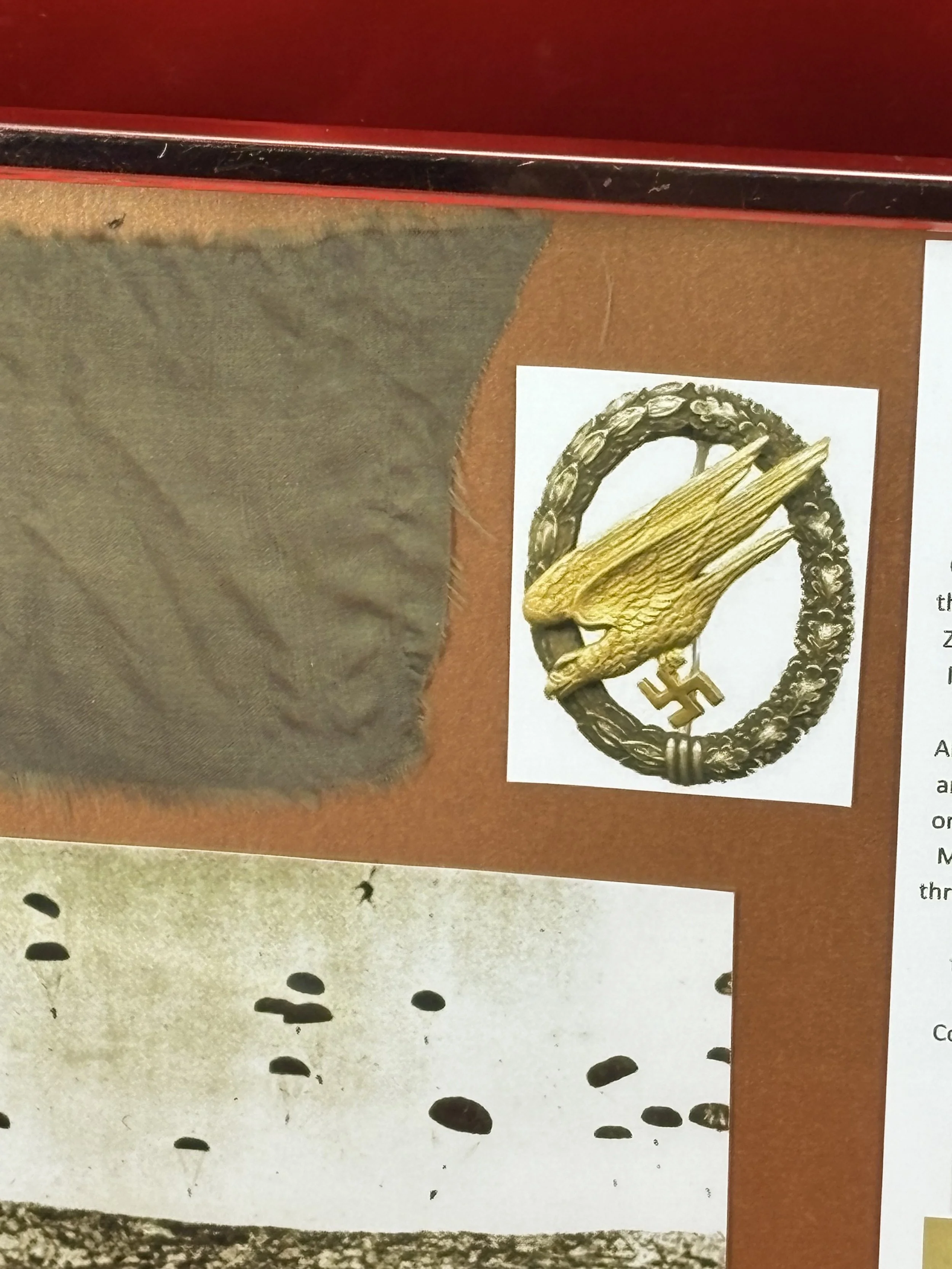 Image 5 of 6
Image 5 of 6

 Image 6 of 6
Image 6 of 6







Glass framed silk parachute section used by a German Fallschirmjager soldier that was recovered on Crete used during the Battle in May 1941
This is a glass-framed silk parachute section used by a German Fallschirmjager soldier. The fabric piece that retains all of its original camouflage colours and is very solid and not braking up falling apart. The part has has been mounted in a glass-fronted frame measuring 12 inches long by 10 inches wide making it perfect for display or a collection.The section was used by a German Fallschirmjager soldier that was recovered on Crete used during the Battle in May 1941 when the Germans captured the Island from the British.
On the morning of 20 May 1941, the Germans launched an airborne assault along the northern coast of Crete, using paratroopers and gliders. British, Australian, New Zealand and Greek forces were not organised into a single formation and had only light weaponry, limited transport, artillery and signals equipment. German forces soon captured Maleme airfield and began to land supplies and reinforcements. Allied troops fought on for several days and Cretan civilians including men, women and children resisted the invaders. Reluctantly, Allied commanders were forced to order the evacuation of the island. The Royal Navy began a rescue operation on 28 May, but German air and sea attacks caused many casualties. The Royal Navy lost three cruisers and six destroyers, and a further 16 vessels were badly damaged. By 1 June 1941, the evacuation was complete. The Battle was a victory for German forces, but they had suffered heavy losses with around 4,000 killed or missing. Germany would never again attempt a major airborne assault. Of the total Commonwealth force in Crete of 32,000 men, some 18,000 were evacuated, and 12,000 were taken prisoner. A further 2,000 lost their lives.
This is a glass-framed silk parachute section used by a German Fallschirmjager soldier. The fabric piece that retains all of its original camouflage colours and is very solid and not braking up falling apart. The part has has been mounted in a glass-fronted frame measuring 12 inches long by 10 inches wide making it perfect for display or a collection.The section was used by a German Fallschirmjager soldier that was recovered on Crete used during the Battle in May 1941 when the Germans captured the Island from the British.
On the morning of 20 May 1941, the Germans launched an airborne assault along the northern coast of Crete, using paratroopers and gliders. British, Australian, New Zealand and Greek forces were not organised into a single formation and had only light weaponry, limited transport, artillery and signals equipment. German forces soon captured Maleme airfield and began to land supplies and reinforcements. Allied troops fought on for several days and Cretan civilians including men, women and children resisted the invaders. Reluctantly, Allied commanders were forced to order the evacuation of the island. The Royal Navy began a rescue operation on 28 May, but German air and sea attacks caused many casualties. The Royal Navy lost three cruisers and six destroyers, and a further 16 vessels were badly damaged. By 1 June 1941, the evacuation was complete. The Battle was a victory for German forces, but they had suffered heavy losses with around 4,000 killed or missing. Germany would never again attempt a major airborne assault. Of the total Commonwealth force in Crete of 32,000 men, some 18,000 were evacuated, and 12,000 were taken prisoner. A further 2,000 lost their lives.
